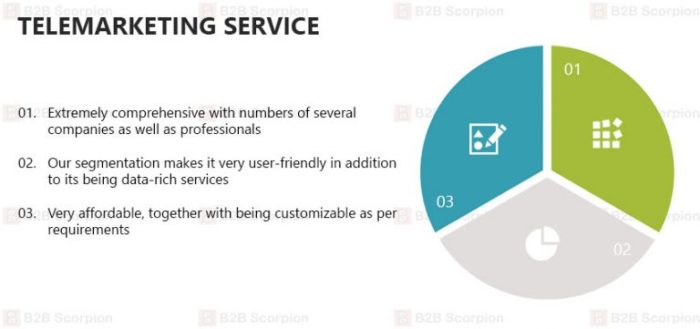
Telemarketing campaign metrics play a crucial role in evaluating the effectiveness of marketing efforts and enhancing overall performance. By understanding these metrics, businesses can make informed decisions and optimize their telemarketing strategies for better results.
From calculating key performance indicators (KPIs) to tracking conversion rates and call durations, grasping the nuances of these metrics allows for a more streamlined approach. Additionally, integrating marketing software and leveraging market research can further elevate the success of telemarketing campaigns.
Telemarketing Campaign Metrics Overview
Understanding the metrics that drive telemarketing campaigns is essential for maximizing their effectiveness. By defining and analyzing key performance indicators (KPIs), businesses can make informed decisions that enhance their outreach efforts. This overview will explore the essential metrics, how to calculate them, and the significance of tracking conversion rates and call durations.
Essential Metrics for Evaluating Telemarketing Campaigns
To effectively evaluate telemarketing campaigns, it is important to focus on specific metrics that provide insight into performance. Here are some critical metrics:
- Conversion Rate: This metric indicates the percentage of calls that result in a desired action, such as a sale or appointment. It is calculated using the formula:
Conversion Rate = (Number of Conversions / Total Calls Made) × 100
- Call Duration: Tracking the average length of calls helps gauge the effectiveness of conversations. Longer calls may indicate more engaged prospects, while excessively long calls might suggest inefficiency.
- Lead Response Rate: This measures how quickly leads are contacted after initial outreach. A faster response often correlates with higher conversion rates.
- Contact Rate: This indicates the percentage of successful contacts made compared to the total number of calls placed. It is crucial for assessing the quality of the lead list.
Calculating Key Performance Indicators for Telemarketing Efforts
Calculating KPIs is a straightforward process that allows for precise tracking of campaign performance. The following metrics are routinely calculated:
- Sales per Call: This indicator shows the average revenue generated per call. It can be calculated as follows:
Sales per Call = Total Sales Generated / Total Calls Made
- Cost per Acquisition (CPA): Understanding how much is spent to acquire a customer is vital. It is calculated using:
CPA = Total Campaign Costs / Number of New Customers Acquired
- Average Handling Time (AHT): This KPI reflects the average time spent on calls, which includes talk time and hold time. AHT can be calculated as:
AHT = Total Handling Time / Number of Calls
Importance of Tracking Conversion Rates and Call Durations in Telemarketing
Tracking conversion rates and call durations is vital as it directly impacts the effectiveness of telemarketing efforts. Understanding these metrics allows businesses to:
- Identify trends in customer engagement, leading to improved training for agents.
- Optimize the sales process by recognizing which tactics lead to higher conversion rates.
- Allocate resources more efficiently by understanding which times and methods yield the best results.
Regular monitoring of these metrics can lead to actionable insights that enhance campaign performance, ensuring that each call is a step towards achieving sales goals.
Utilizing Marketing Software for Telemarketing
In today’s fast-paced marketing environment, leveraging the right marketing software can significantly enhance the effectiveness of telemarketing campaigns. By integrating advanced tools and features, businesses can streamline their processes, improve campaign tracking, and ultimately drive better results.Marketing software designed for telemarketing provides a range of functionalities that simplify and optimize campaign management. These tools support everything from lead generation to performance analytics, allowing marketers to focus on strategy and execution rather than administrative tasks.
Effective telemarketing software not only organizes contact information but also tracks interaction history, campaign performance, and customer feedback, all in real-time.
Features of Effective Telemarketing Software
When selecting telemarketing software, it is crucial to consider the features that will best support your campaign goals. The following characteristics should be prioritized:
1. CRM Integration
Seamless integration with Customer Relationship Management (CRM) systems ensures that your telemarketing team has access to comprehensive customer profiles and interaction history, fostering personalized communication.
2. Call Tracking and Reporting
This feature enables marketers to analyze call outcomes, duration, and frequency, providing valuable insights that can inform future strategies.
3. Lead Management Tools
Efficient lead management allows for easy tracking of leads from initial contact to conversion, ensuring no opportunity is overlooked throughout the sales funnel.
4. Script Management
Providing your team with customizable scripts can help standardize communications while allowing flexibility to adapt to individual customer needs.
5. Automated Dialing
Automated dialing systems can significantly reduce the time spent on manual dialing, increasing the number of calls made and improving overall productivity.
6. Data Analytics and Dashboards
Comprehensive analytics tools present data in visual formats, making it easier to gauge campaign performance and make data-driven decisions.To effectively assess potential software options, consider the following checklist:
Checklist for Selecting Marketing Software for Telemarketing
Before committing to a software solution, evaluate it against these essential criteria to ensure it meets your telemarketing needs:
User-Friendly Interface
The software should be intuitive and easy for your team to navigate.
Customization Options
Ensure that the software can be tailored to fit your specific telemarketing strategies.
Scalability
Look for options that can grow with your business without requiring frequent changes.
Cost-Effectiveness
Analyze pricing tiers and overall value against the features offered.
Customer Support
Reliable customer service is essential for troubleshooting and optimizing software use.
Security Features
Ensure that data protection measures are in place to safeguard sensitive customer information.By utilizing the right marketing software equipped with these features, businesses can enhance their telemarketing efforts, achieving higher efficiency and better tracking of campaign performance.
The Role of Market Research and Public Relations in Telemarketing

Market research and public relations play vital roles in the success of telemarketing campaigns. By understanding customer needs and perceptions, businesses can tailor their telemarketing strategies to effectively engage their target audience. This alignment not only enhances outreach but also boosts conversion rates, making effective use of marketing resources.Integrating market research into telemarketing strategies enables organizations to gather valuable insights about customer preferences and behavior.
This information allows for the creation of targeted lists, improved scripts, and ultimately, more personalized interactions. The significance of data-driven decisions cannot be overstated, as they directly influence the effectiveness of outreach efforts.
Integration of Market Research
Market research serves as a foundational tool for enhancing telemarketing strategies. By analyzing consumer data, businesses can identify specific demographics that are more likely to respond positively to their offerings. Some key aspects of integrating market research include:
- Understanding Target Audience: Detailed profiles of potential customers help in crafting messages that resonate. For instance, knowing whether the audience is primarily millennials or retirees can dictate the tone and content of the communication.
- Competitive Analysis: Insights into competitors’ strategies can inform telemarketing approaches, allowing businesses to differentiate their offerings effectively.
- Feedback Mechanisms: Gathering feedback through surveys or direct responses can refine scripts based on real-time customer reactions, leading to continuous improvement in engagement techniques.
Public relations also significantly impacts the success of telemarketing campaigns. A strong PR presence helps to build credibility and trust, which are essential when approaching potential clients over the phone. Effective PR strategies ensure that the company is viewed positively in the market, thus increasing the likelihood of successful conversions during telemarketing efforts.
Impact of Public Relations
Public relations create a favorable environment for telemarketing initiatives. By enhancing brand image and managing communication, PR strategies provide a backdrop that supports telemarketing efforts. Important factors to consider include:
- Brand Awareness: Consistent PR efforts heighten brand visibility, making prospects more receptive to calls.
- Trust Building: A reputable public image fosters trust, making potential customers more willing to engage and share information during calls.
- Crisis Management: Effective PR can mitigate negative perceptions that may arise, ensuring that telemarketing teams are not hindered by public backlash.
In addition to these aspects, certain trends in market research influence telemarketing effectiveness. Organizations that keep abreast of these trends can adapt their strategies accordingly.
Trends in Market Research
Current trends in market research highlight essential shifts that can enhance telemarketing effectiveness. Understanding these trends allows companies to stay competitive and relevant in their outreach efforts. Some notable trends include:
- Data Analytics: The increasing use of big data analytics enables businesses to predict customer behavior more accurately, enhancing the precision of telemarketing campaigns.
- Personalization: Market research increasingly emphasizes personalization, where tailored messages significantly increase engagement rates.
- Omnichannel Insights: Insights gained from various marketing channels help create a cohesive strategy, ensuring that telemarketing efforts complement other marketing initiatives.
Summary

In summary, effectively managing telemarketing campaign metrics not only provides a clearer picture of performance but also paves the way for continuous improvement. By focusing on the right KPIs, utilizing advanced software, and integrating market insights, businesses can significantly enhance their telemarketing efforts and achieve greater success.
FAQ Insights
What are the most important telemarketing metrics?
The most important telemarketing metrics include conversion rates, call duration, lead response times, and customer satisfaction scores.
How can I improve my telemarketing campaign metrics?
You can improve your metrics by analyzing data, optimizing scripts, training staff effectively, and utilizing technology for better tracking and efficiency.
What role does software play in tracking telemarketing metrics?
Software helps automate data collection, provides real-time analytics, and simplifies the process of tracking key performance indicators, making it easier to optimize campaigns.
How often should I review my telemarketing metrics?
It’s advisable to review your telemarketing metrics regularly—ideally, on a weekly or monthly basis—to identify trends and make timely adjustments.
Can market research influence my telemarketing efforts?
Yes, market research provides valuable insights into customer preferences and behaviors, which can inform your telemarketing strategy and improve campaign effectiveness.





